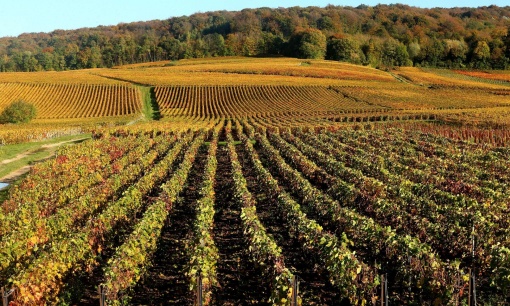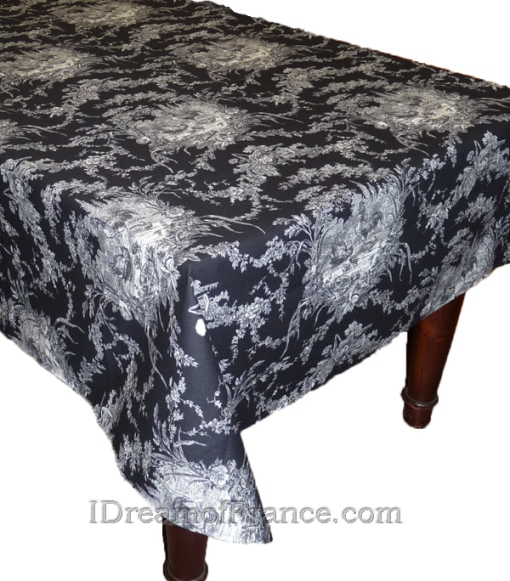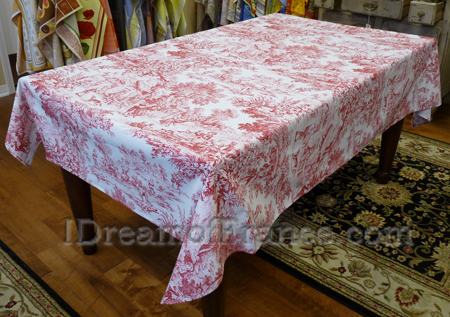
Receiving guests around a dinner table is a a very important part of French culture. Having guests over for a religious occasion, anniversary or other important date requires flawless planning and execution. Every person sitting at the table will become a judge of the affair and any faux pas will necessarily become a subject of gossip for years to come. This may seem a bit exaggerated (and it is) but I do remember my mom really stressing trying to prepare Easter or Christmas dinners for a dozen family guests. So here are a few dos and don’ts for successfully setting a French table:
Silverware: They should be organized in the order in which they will be used from the outside to the inside.
Forks: Left of the plate, facing down.
Knives: Right of the plate, the cutting side of the blade facing toward the plate.
Dessert spoon and cheese knife: Over the plate with the handle to the right. Spoon faces down and the cutting side of the knife toward the plate.
Glasses: From left to right, from larger to smaller. In order: water then red, then white.
The plates: Positioned one to two centimeters (3/8″ to 3/4″) from the edge of the table. Never use more than three stacked plates. After the main course, the dinner plate (and presentation plate) are removed and replaced with the cheese plate and then the dessert plate.
Presentation plate: Optional, it is there to help present the other plates. It is removed when the cheese is served in its own plate.
Dinner plate: Used for the main course.
Soup bowl: Called a deep plate (assiette creuse) in France, its shape is in between a plate and a bowl.
Bread plate: Optional, the small plate is positioned above and left of the main plates.

French table place setting
Tablecloth and napkins:
Napkins can be folded in many ways: in a glass, in a plate, in a napkin ring, as a square, in the shape of a flower, use your imagination! The Napkin Folding Guide has 27 ideas to get you started.
Tablecloth folds: If you are using a round tablecloth, all folds should be ironed out. If you are using a rectangular tablecloth, you can leave a fold lengthwise, but the crosswise folds must be ironed out. If you have table extensions, you can use several tablecloths to cover the whole length — or just visit our website or call us and order the correct size!
Decorations: Your table should be quite full when the food is served, so you do not need much to decorate. Avoid flower bouquets that are too large as they will block the view between guests. Try two or more smaller, short arrangements of cut flowers instead of one large arrangement that people will strain to see over. If one of your guests brings you a large bouquet, thank them, but don’t feel obligated to add it to the dining table if it’s too big or carries a strong fragrance. Placing their gift on a side table, coffee table, or bar top will show your appreciation just as well.
Do not use scented candles during a meal — instead, try our perforated taper candles, which will burn longer without making a mess.
Make sure to put enough salt shakers and pepper grinders (try our salt, pepper and herbes de Provence ceramic mills), trivets, and water carafes.
To avoid making too many trips to the kitchen, have a place nearby where you can keep your serving utensils. A buffet table or sideboard is designed just for this purpose, but if you don’t have one, a small table or a tray will do just fine.
Now it is time to get everybody seated and enjoy a delicious French meal!
Information courtesy of www.clase-frances.com.ar.
–Jean-Michel








